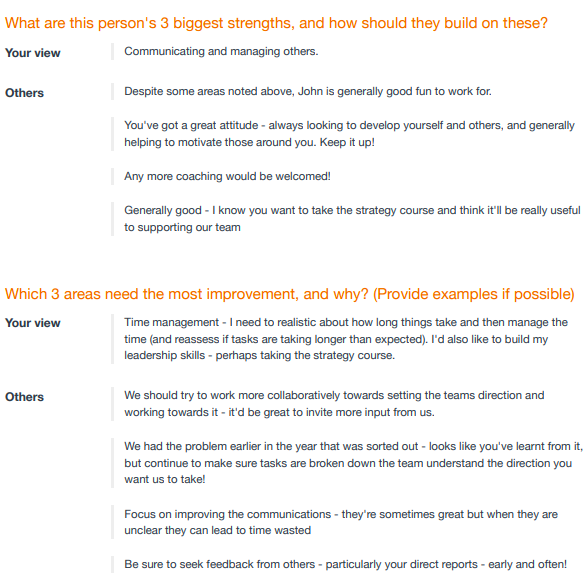Spidergap provides excellent guidance on how to best review your results
So, you’ve received your 360° Feedback report.
That’s great news! Feedback should always be welcomed, even if you don’t agree with all of it. Understanding your colleagues views, and using this information, will help you to grow in your career and be happier in your job.
You may be wondering:
-
How do I use this feedback report?
-
What am I meant to do if there’s feedback I don’t understand or disagree with?
-
Am I expected to use the feedback straight away?
-
How does it relate to my other business priorities and my career goals?
-
And how do I make good use of my time? (I’m busy!)
Don’t worry — these are usual concerns to have, particularly if this is your first time receiving 360° Feedback.
We’ve outlined 5 easy-to-follow steps below that will walk you through how to review the report and decide how to use it.
You’ll then be ready to create your personal development plan and take action, which we cover in our next guide.
P.S. If you haven’t received your report yet, you can take a look at a sample report. Your report will be shared after all of the feedback has been collected.
1. Review your top strengths and areas to improve
You don't need to spend time reviewing every area — the top few strengths and areas to improve are likely to be where you can make the biggest impact.
The areas that were rated as your top 5 strengths and areas to improve are shown at the start of the report.
Take a few minutes to see if there are any surprises by looking at the full list of areas assessed, and by comparing the views of those who gave feedback (including your own view!).

2. Understand why these areas came out on top
Get a deeper understanding of your top strengths and areas to improve by reviewing the written feedback in the “What people said about you” and “Appendix” sections (examples below).
You may find that you don’t really understand some of the feedback. That’s OK! Make a note of the questions you have, and you can review these with your manager or coach. If it’s useful, you can also go and talk to your colleagues to ask for some more specific examples.
Don’t try and and do a detailed review of everything in your feedback report — remember to focus on your top strengths and areas to improve if you want to get the most value out of your feedback!

3. Think about how to use this feedback
Choose a few strengths and areas to improve to focus on. To make good use of your time, we recommend choosing up to 3 of each. These might be the top rated areas, but they don’t have to be.
Then think about ways in which you can:
-
Play to your strengths — perhaps by using them more often, or helping others to improve in these areas.
-
Tackle your areas for improvement — think about the reasons for these areas being highlighted as needing improvement, and how these can be addressed.
Sometimes your colleagues share specific ideas on how you can use your strengths and areas to improve. It’s up to you to decide if these are good ideas or not :)
You may find that playing to a strength or tackling an area for improvement will require changes to your wider team and organization. Think about any changes you could help to make.
4. Summarize your conclusions
At this point, you will have a lot of questions and ideas in your head.
It’s worth taking 10 minutes to write down your conclusions so you can refer to them when discussing your feedback with your manager, and when creating your plan:
-
What are my top 1-3 strengths?
-
What are my top 1-3 areas to improve?
-
What ideas do I have for playing to my top strengths?
-
What ideas do I have for tackling my top areas to improve?
-
Where am I unclear about the feedback given? (and so need input from my coach or colleagues)
5. Create a plan and take action
It’s time to put this feedback to use by creating your personal development plan!
We’ve got a great guide that will help you to:
-
Look at the big picture
-
Choose where to focus your energy
-
Agree on 1 to 3 realistic goals
-
Plan the actions you will take this week
-
Schedule regular reviews (and coaching!)
